Readers Write
Wisconsin Natural Resources magazine encourages reader photos and feedback. On this page, you will find letters that appeared in the last two years. Older letters from recent past issues may be found online here.
Other magazine issues, including reader letters, are archived through the UW-Madison Libraries Digital Collections [exit DNR]. (Note: Magazine content from 1996 and newer is being added to the UWDC site, so some of those years may be temporarily unavailable.)
We welcome your feedback! Email us at dnrmagazine@wisconsin.gov or mail to:
Readers Write
WNR magazine
PO Box 7921
Madison, WI 53707
Winter 2020
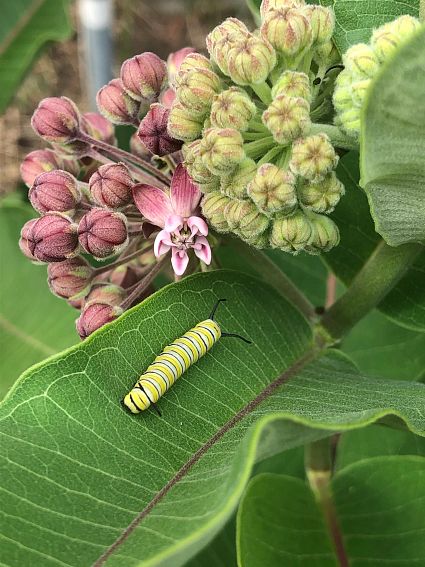
BE OUR GUEST
I have let milkweed grow on the side of my house for a few years now. I start watching it intently for signs of caterpillars around the middle of May, just as soon as it starts popping up. It seemed to take longer than usual this year but by mid-June, these guys started showing up along with milkweed beetles. With just a handful of plants, I counted seven little guests all at the same time — even in the middle of town.
Pete Jaeger
Madison
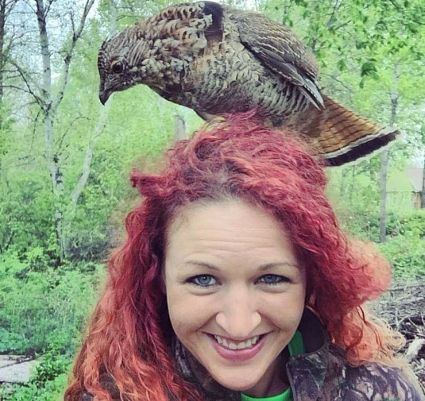
SEVERAL HAVE GROUSE STORY TO SHARE
I was reading your article about a man who was hunting and was surprised a ruffled grouse came and sat with him. I was reminded of the ruffed grouse that befriended us the spring and summer of 2015. We named him “Nerd Bird.” He even sat on my husband Kerry’s lap when he was on the tractor planting.
Our uncommon friendship started when Nerd Bird followed us because of his, we assumed, attraction to the sound of our four-wheeler as we drove past him, almost the same sound the ruffed grouse makes. Slowly, we were able to get him to trust us, sit on our hand, and the rest is history.
Jody Smith (above with "Nerd Bird")
Loyal
I read with great interest the story about the friendly grouse in the Fall issue. For the past three spring maple syrup seasons, I have been greeted and accompanied from tree to tree by “my” grouse. From its behavior, it could only be the same bird year after year.
It joined me each season when I began tapping trees and grew more fearless with each encounter. For the past two years, it would fly over my shoulder, knocking my hat off, landed on my shoulder, landed on the rack of my four-wheeler and ate wild bird seed from my hand multiple times with each visit.
Alan White
Superior
Finally, a long-awaited revelation when I read Tom Prijic’s encounter with the flirty ruffed grouse while at his Amherst Junction deer stand! On a gorgeous fall day in 1992, my family and I were biking on the Root River Trail in southern Minnesota. My sons had surged well ahead of my wife and I, and eventually they stopped along a wooded segment of the trail to rehydrate.
As they awaited us, a ruffed grouse emerged from the entanglement, evaluated them and promptly roosted on one of their front tires. The grouse held fast even when the bike was rolled back and forth in frail attempts to dislodge it.
Being a veterinarian, I mentally began to formulate a list of differential diagnoses that might explain this strange, yet amazing behavior. Was there some form of neurological disease? Had this bird imprinted as someone’s pet? It sure did look healthy.
Eventually, we all went our separate ways, but I always wondered. Maybe these experiences indicate ruffed grouse have advanced their people skills as a means toward self-preservation and making the world a better and less foul place!
Arlynn Schwanke, DVM
Sun Prairie
Thanks to everyone inspired by the Fall “Your Outdoors” column to share their own tales of ruffed grouse adventures. Such “grouse encounters” seem to keep quite a few folks on their toes.
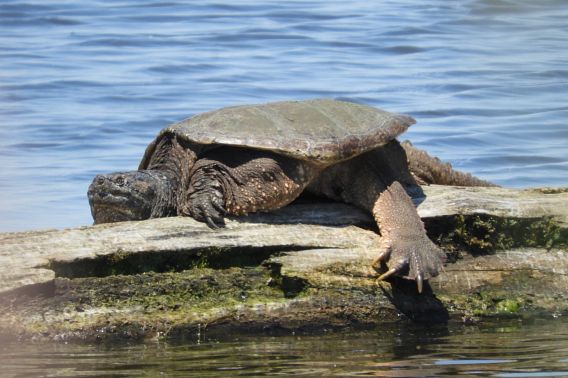
SNAPPER SNAPSHOT
I wanted to share this picture of the huge turtle (above) — a snapping turtle, I believe — which I caught sunning itself on a log at Zeloski Marsh, Lake Mills Wildlife Area. My husband and I had been hiking there almost once a week since 2012, when we moved out toward that area. It was one of our favorite places to see lots of wildlife. … In all the years of hiking, we’d seen lots of turtles, but never one this big. It was amazing.
Sue Varco
Sun Prairie
We walked into our driveway that had recently been re-stoned and saw a snapping turtle making a nest. We live on Huron Lake in Oasis, in Waushara County. I tried to photograph the actual depositing of eggs, but she was very private. We fenced off the area to keep predators away. We will see in two to three months if she was successful.
Rich and Nancy Macia
Oasis
DNR conservation biologist Rori Paloski replies: “Snapping turtles (Chelydra serpentina) have a reputation for being very aggressive turtles, which they can be if you get too close, but there is a reason why they act like this. The plastron, or lower shell, on a snapping turtle is very small. So unlike other turtles, they can’t pull their head and limbs into their shell for protection. Therefore, they often resort to aggression, which is their only defense mechanism when they are threatened or feel their life is in danger. Best to keep your distance, like you did, and get a photo!”
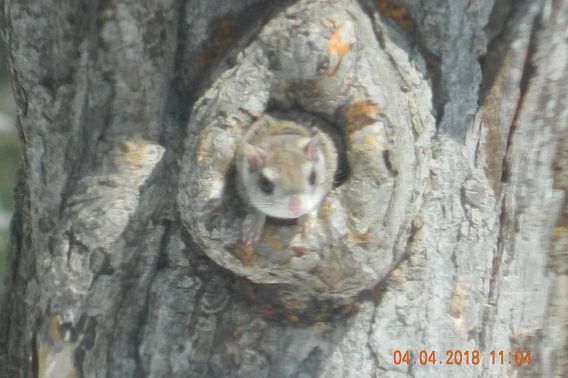
SQUIRREL SURPRISE
My dad, Jack Hayek, living in Polk County near Amery, took several photos in 2018. He says he’s never seen any photos of flying squirrels in your DNR magazine over the years he has subscribed. If you’d like to print any of them, he’d be particularly pleased and also surprised, as he has been asking me for almost two years to send them to you.
He built a house for flying squirrels several years ago and has a pair who lodge there who he named Squirrelly and Shirley. Thanks, and wishing you well.
Anne Hayek
Amery
YOUNG HUNTERS CARRY ON WISCONSIN TRADITIONS
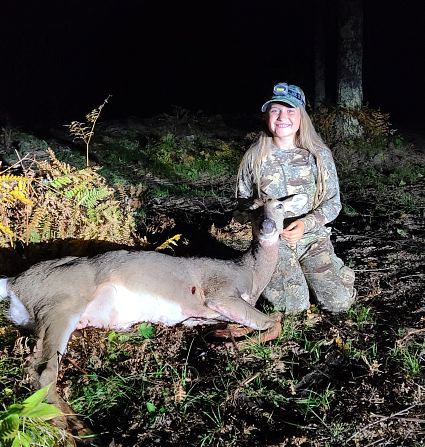
Ava is an incredible girl, and I am so proud of her story and her father who got her to her first 100% natural, no corn kill with a crossbow. Just check out that smile! She practiced, shot, killed, tracked, gutted and processed this beautiful deer with the help of family and friends. True grit in these Northwoods. Girls rule.
Jen Young
Hazelhurst
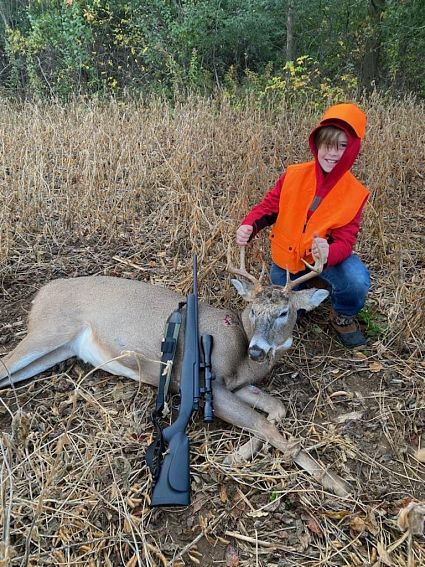
My 11-year-old son, Gabe, went on his first mentored youth hunt this year and shot a beautiful eight-point buck at 200 yards with a .243 rifle. This was his first shot at a deer ever and did it with one shot, right outside of Ridgeland in Barron County on Oct. 11 at 7:45 a.m.
I’m originally from Ridgeland. I live in Rice Lake and hunt on my parents’ acreage. My father-in-law and I took my two oldest, Gabriel and Madaline, hunting this year for the first time.
George Handorf
Rice Lake
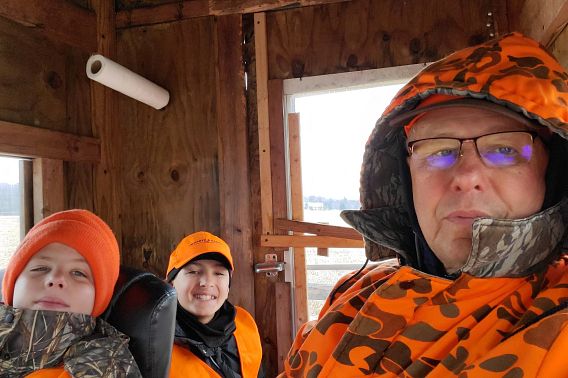
Last year, I took two grandsons out hunting. Nick and Nathan, both 12, were able to get two bucks on the standard nine-day hunt in November. This year, I took two more grandkids out on the youth hunt — Rachel, 14, and Joe, 11. Rachel was able to get a nice eight-point buck. I am proud of my four grandkids. We hunt in Walworth County on private property.
Todd N. Hitzeman
La Grange Park, Illinois
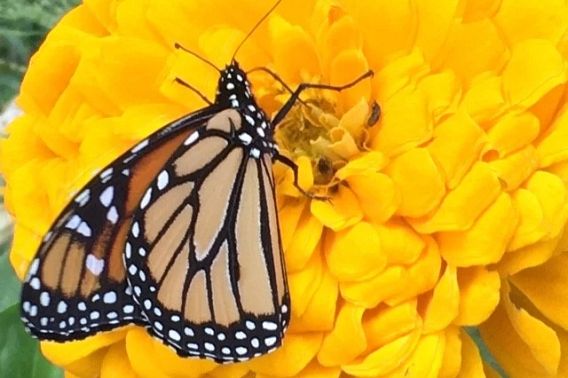
MORE MONARCHS GOOD TO SEE
There seem to be more monarchs around this year, so maybe the habitat efforts are paying off. This one is on a State Fair zinnia on my farm, Moki Lane Farm in Winnebago County. For the record, the picture was taken with my cellphone, not an expensive camera.
Jim Zitzelsberger
Oshkosh
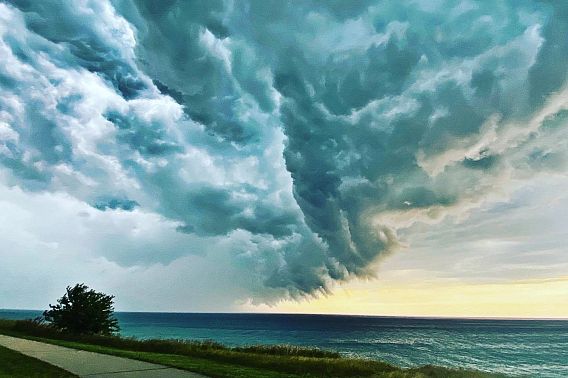
STORM OVER LAKE MICHIGAN
A photo of a summer storm meeting Lake Michigan in Milwaukee County in August. It looks like a watercolor painting! Seen from bikes on the Oak Leaf Trail, Sheridan Park, St. Francis.
Brenna Bellmer
St. Francis
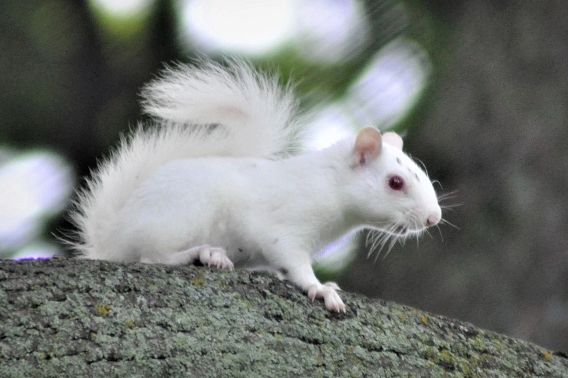
WELCOME WAGON PASSES THROUGH
This albino red squirrel was in my backyard and in my big maple tree for about two hours. The really neat thing is that this sighting occurred the day before my granddaughter, Zoey Blaha, arrived into this world. Yeah, I kind of took this as a sign. I have not seen this squirrel since that day. It must have been just passing through.
Brad Blaha
Two Rivers
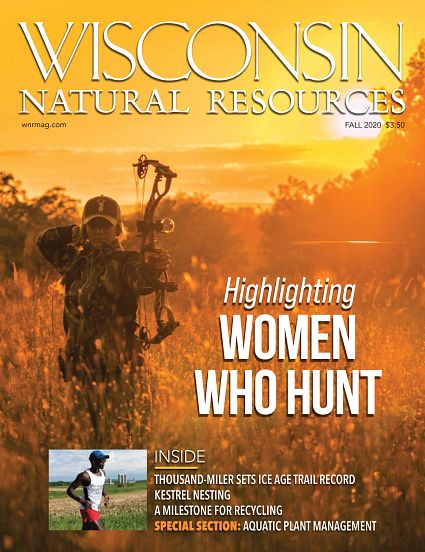
RIDING HIGH FROM READER PRAISE
I’ve enjoyed Wisconsin Natural Resources for many years, and the Fall 2020 issue is a terrific example of the unique service the magazine provides to Wisconsin citizens. The Fall issue contained interesting articles and photographs featuring the different ways Wisconsin residents enjoy the outdoors — hunting,
running, photography and more.
Further, the issue had several articles thoughtfully addressing scientific issues in the outdoors — e.g., several articles on water plants and several more on declining bird populations — that simply cannot be found anywhere else. Thanks for all you do, and keep up the good work.
Tim O’Shea
Madison
Loved the Fall 2020 issue! I really appreciated the recommendations in Good Reads; I hope you can do that again.
Rita Schmidt
Madison
We got our Fall 2020 issue today in the mail. I LOVE the enclosed bookmark in this issue. I hope this is something you will include in every issue. In this day and age of e-books, I prefer the feel of a hardcover book and a beautiful bookmark, which you have provided. Thanks again.
Joyce Rasmussen
Waukesha
I think the Fall 2020 issue of the magazine is the best ever! I loved the articles about the women hunters, especially. I started bird hunting with my husband, Jim, the year I turned 40 and have had some great times. We have gone to South Dakota pheasant hunting every year since 2002.
We have hunted with guys from all over the country and in all that time, I have been the only woman hunting there. Our group agreed to cancel this year due to the virus. Keep up the good work!
Jane Leverance
Brooklyn
Thanks to so many readers who offered such kind feedback. We’ll continue trying to bring you the best magazine we can every quarter, with bonus items and special inserts when possible. Enjoy the NHC Field Notes and Friends of Wisconsin State Parks calendar in this issue, and happy 2021!
Fall 2020
Fall 2020
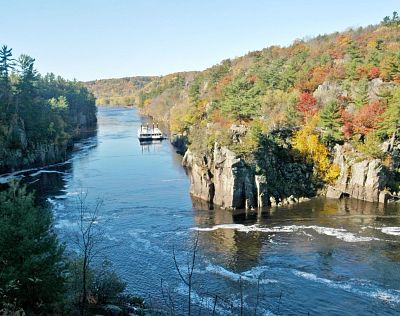 ©DNR FILES
©DNR FILESADD ANOTHER 10 YEARS
A little blurb under “Dateline DNR” on Page 5 of the Summer issue acknowledges Interstate as the Wisconsin Park System’s oldest at 110, but then goes on to say it was established in 1900, which was 120 years ago. If 1900 is correct, then it is the oldest. But I have a T-shirt from Peninsula’s centennial, 1909-2009, which makes it 111 years old.
Kathy Kieper
Mercer
Indeed, our math was off. Interstate (shown here) was established in 1900, making it 120 years old and Wisconsin’s oldest state park. Land to create Peninsula was purchased in 1909. Good catch, Kathy. Sorry for the confusion — and the poor arithmetic!
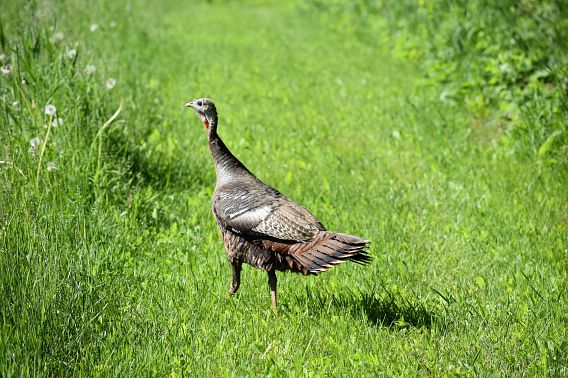
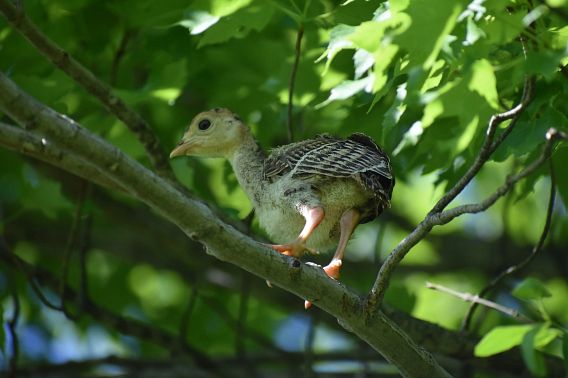
MOTHER HEN AND HER POULT
Friends of ours who subscribe to your magazine encouraged me to subscribe as well and submit some photos I took for your consideration. I have attached images of a wild turkey hen who was in our field along with one of her poults. Thank you!
Kim Robel
Cameron
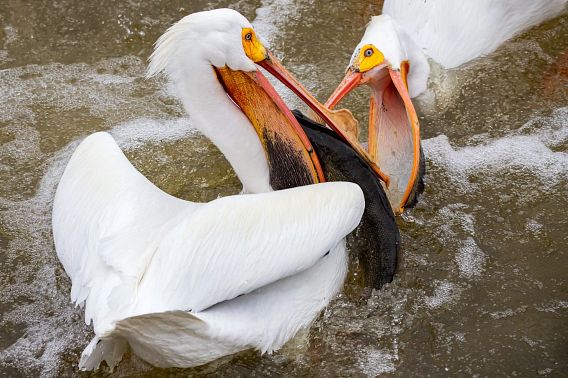
ROWDY DINNER COMPANIONS
I captured these photos of American white pelicans enjoying the spring walleye run on the Fox River in De Pere. Their fishing methods are fascinating. However, they’re not exactly into helping each other or sharing. They take cheap shots to steal from one another. I thought your readers might enjoy seeing them. Pass the tartar sauce.
Adam Jackson
De Pere
WITNESS TO A WATERSNAKE LUNCH
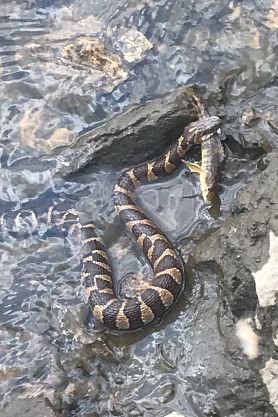
I was recently back home in Wisconsin visiting family and went fishing at Port Andrew on the Wisconsin River near Blue River. I was able to snap a picture of this snake and his lunch. We are subscribers to Wisconsin Natural Resources magazine and thought this would be a great picture for your publication.
Tim Degenhardt
San Diego
DNR conservation biologist Rori Paloski replies: “Thank you for submitting the photo! The snake is a non-venomous common watersnake (formerly called the northern watersnake). As their name implies, they can be found near a variety of water sources including rivers, streams, lakes, ponds and even Great Lakes shorelines. Although fish and amphibians make up the majority of their diet, you definitely have to be in the right place at the right time to witness a watersnake actually catching and eating a fish!”
EARTH DAY CONNECTIONS
I grew up in Madison and learned the term eutrophication in junior high. As a high school freshman, I remember the first Earth Day celebration. 1970 was a heady year as in May, anti-war protesters came to high school protesting the American invasion of Cambodia, and in August, UW’s Sterling Hall was blown up by anti-war protesters.
A friend of the family and a mentor of mine was Bud Jordahl. He was considered the primary man behind the scenes for Sen. Nelson, who created Earth Day. Many noted conservationists have connections to Wisconsin such as John Muir, Aldo Leopold, Ding Darling and Warren Knowles. I was blessed to have such an upbringing.
Dean Farr
Crystal Lake, Illinois
OWL UPDATE
So very thrilled to see that my story, along with photos, was published in the Summer issue of Wisconsin Natural Resources magazine (“Your Outdoors”) — thank you so much! I am sharing one with my daughter and sending one to my parents, who live in an independent living facility, quarantined. I’m sure they will enjoy the entire issue.
The owls are still here but nested somewhere outside my property this spring. They have two young ones and are on the night shift already. I hear them call for food, many times at dusk and into the night. … Kind regards.
Lisa Vandervest
Mequon
PHOTOGRAPHY OUTINGS ARE 'PRETTY AWESOME' FOR MOM, TEEN SON
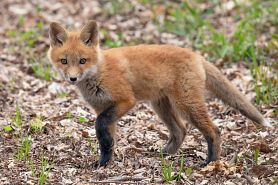
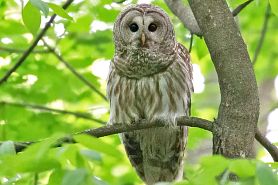
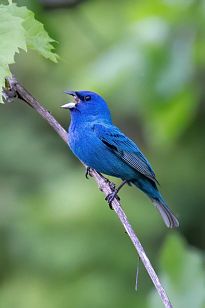
My son and I have been out honing our photography skills since “safer at home” took place in our state. My son, Keegan Knudsen, is 17 years old and has had a tough time not being in school or hanging out with his friends. With our love of nature, we took this time to explore the trails and state parks in our area.
Keegan is a natural at photography and locating wildlife. He has photographed a raccoon, indigo bunting, yellow warbler, red squirrel and barred owls, while I took photos of a deer with newborns and barred owls, including an owlet.
We have had a lot of fun searching and photographing nature together. This has been pretty awesome hanging out with him during this time and a wonderful bond we will continue to share.
Heather Landers
Kaukauna
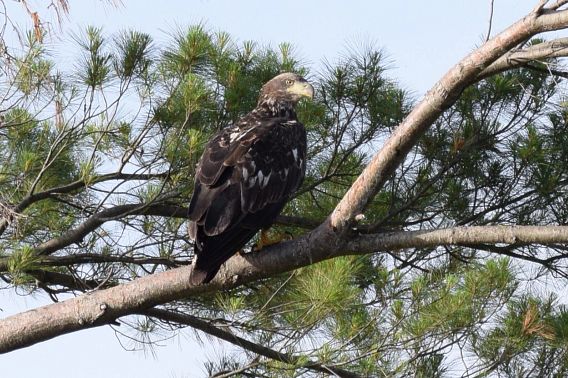
EAGLE LANDS AT HALF MOON LAKE
I’ve been trying to keep an eye on the birds of prey around Half Moon Lake (Polk County) after a tornado last year. I wasn’t sure if their nests had been damaged and if they’d come back to roost again. Sure enough, they’re back — including this juvenile. I was able to catch it perching on a branch and making a less-than-graceful departure.
Leo Balestri
Milltown
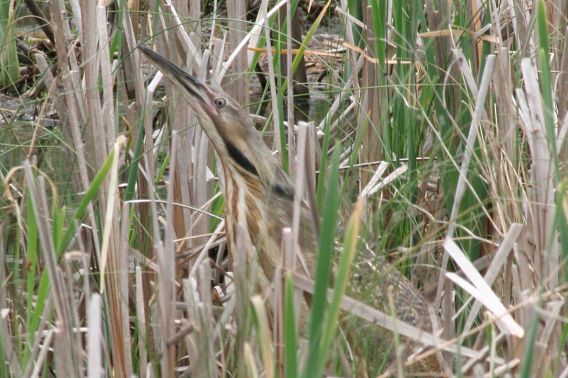
AMERICAN BITTERN IN THE WILD
I wanted to share a photo I took of an American bittern. This is the first time I have seen one in the wild. I took the photo on May 24 near the Sandhill Wildlife Area in Wood County. We were on our way to the refuge area to view the swans that hang out there. Earlier that day, we saw a pair of swans within the wildlife area that had six cygnets with them — I was surprised to see that many cygnets with one pair.
Daniel Morzewski
Wisconsin Rapids
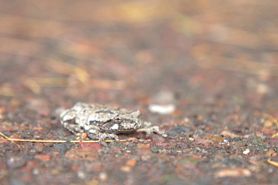
FROG FITS FOR SURE
I snapped this photo of a gray treefrog warming itself up on the roadway at Irvine Park in Chippewa Falls. I moved him to a nearby rock out of traffic. Not sure if it would fit in with your Readers Write section or not.
Sean Kitchell
Stanley
In fact, it fits in perfectly — thanks for sharing!
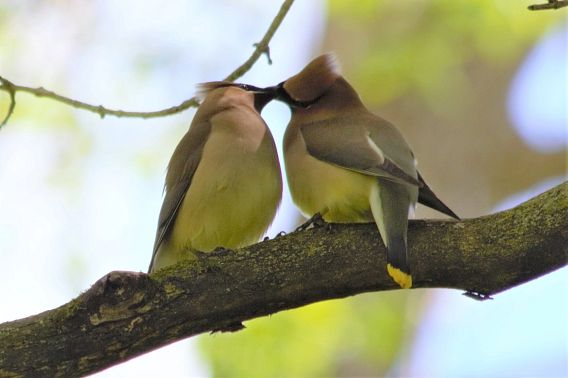
WATCHING WAXWINGS
My husband, Jim, captured photos of cedar waxwings at Regner Park in West Bend and Ziegler Park in Mayville. Here’s a favorite. We enjoy walking and bird watching at the local parks. We also enjoy sharing our joy!
Bonnie Halper
Kewaskum
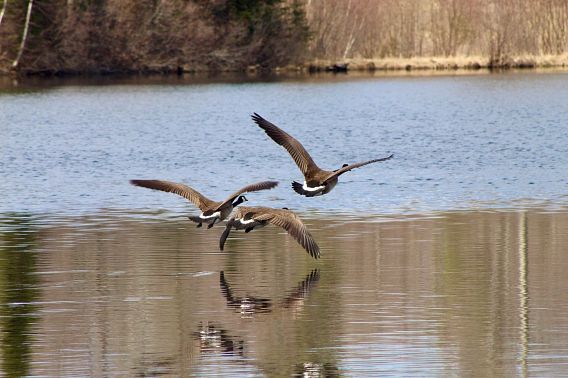
GEESE GET THE SPOTLIGHT
Here is a photo I took at Sobieski Flowage in Rusk County. I would really love to get it into your magazine!
Haven Pearison
Hawkins
Wish granted!
BONDING OVER RECYCLING, RESOURCES
My father-in-law, Tim, is a longtime subscriber to WNR and recently got me a year-long subscription to the magazine. Since I first met my husband and began bonding with his family, my father-and-law and I have bonded over our mutual appreciation of Mother Nature.
One of his first gifts to me was a backyard composter. On Saturday mornings when he would take all of the recycling to the center in town, I would ask endless questions about what could and couldn’t be recycled, and Tim would describe the intricacies of the process to me. When he came back, we would birdwatch from the kitchen window and he would tally any new species in his bird book.
I wanted to share that as a Wisconsin transplant and longtime lover of the outdoors myself, I really have enjoyed your publications. Thanks for connecting readers to our state’s amazing natural resources and each other!
Emily Schuler
Milwaukee
The timing of Emily’s letter couldn’t have been better, coming just as magazine editors were planning content for this issue celebrating anniversaries of Wisconsin’s recycling and e-cycling laws. Check out the coverage found in the Fall issue here.
Summer 2020
Summer 2020
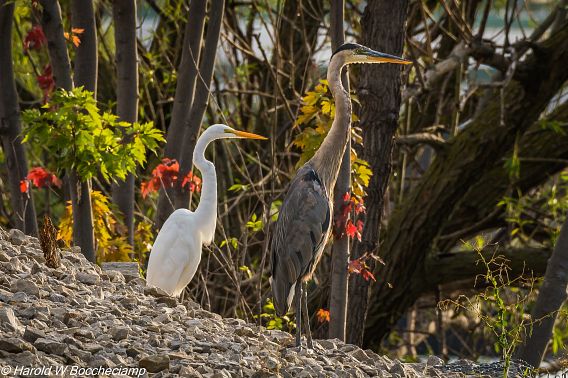
TWO GREATS IN ONE FRAME
Great egret and great blue heron in Menasha.
Harold W. Boccheciamp
Neenah
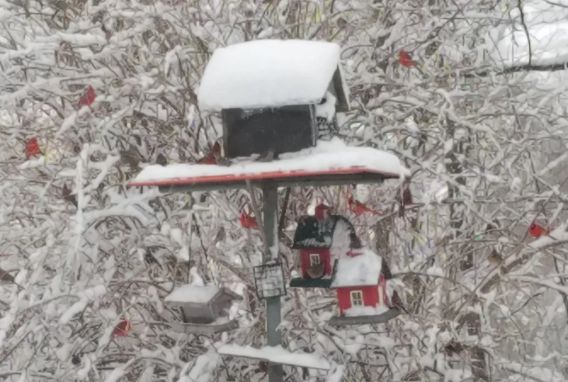
ALL DRESSED IN RED
Just a few of the many cardinals at the feeder in February.
Karen Grunewald
Jefferson
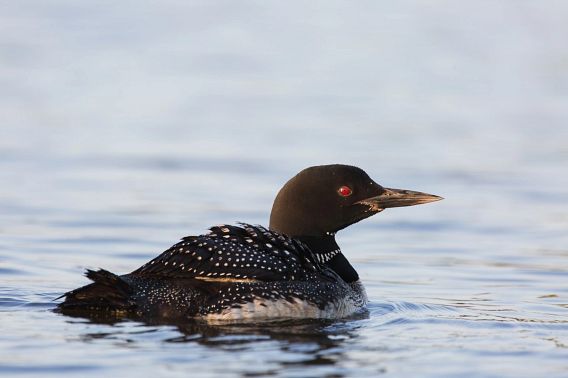
SYMBOL OF THE NORTHWOODS
I’m a photographer based in the Northwoods of Wisconsin. I’m reaching out because I wanted to submit some of my photos for your magazine. Thank you so much for your consideration!
Kristen Carlson
Tomahawk
Thanks for sharing your photos, Kristen. Because of its symbolism, we chose this one of the common loon with its prominent red eye. Loons are icons of the Northwoods and known for their haunting calls, described as wails, hoots, tremolos and yodels. They are among many migratory waterfowl that live in Wisconsin during warm months. The Sigurd Olson Environmental Institute at Northland College in Ashland oversees LoonWatch, a program to protect common loons and their habitats through monitoring, research and education. Check northland.edu/centers/soei/loonwatch to learn more.
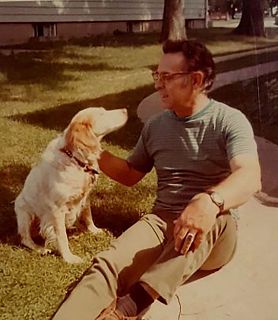
REMEMBERING DON THOMPSON
While reading your Spring issue (“Back in the day”), I was disappointed that you gave no facts about the career of Donald R. Thompson on page 47, under the heading of “Conservation Update.” You printed only that Don wrote the article.
Don was an excellent employee of the former Bureau of Research (Wisconsin Conservation Department and later, the DNR). Don and I were students at the University of Illinois; we both had Dr. Kendeigh (noted ornithologist S. Charles Kendeigh) as a teacher.
Don was a fellow biologist of mine when I worked at the DNR’s Nevin Hatchery from 1967-80. He helped me several times with his knowledge of surveys, statistics and ecology. Don also was one of Aldo Leopold’s students and deserves more recognition.
Chuck Pils
Madison
Thanks for the letter, Chuck, it’s always good to hear from a former longtime DNR employee like you (33 years of wildlife management service before retiring in 1999) to remind us of the dedication and knowledge of so many here before. Indeed, Don Thompson spent his entire professional career at the Wisconsin Conservation Department/ DNR, especially instrumental in overseeing then-emerging forms of data collection through species and habitat surveys as a tool for wildlife management. Thompson was chief of the Technical Services Section in the DNR’s Bureau of Research when he retired in 1982. He continued his involvement in outdoor pursuits and shared his knowledge through numerous volunteer activities until his death in 2014 at the age of 94.
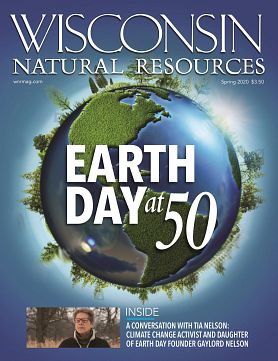
NEVER TOO COLD TO HANG OUTSIDE
I greatly enjoyed reading through the Spring issue. However, one item stopped me short. In the “Earth Day 365” article, the author said Wisconsin’s winter weather was “not always practical” when it came to hanging laundry outdoors. I beg to differ.
On bright and sunny days, during the coldest of winters, I will hang sheets out on the line. The scent and freshness of the winter air is beyond all comparison. I learned this from my mother-in-law many years ago when she asked me to hang out her sheets in 30-below wind chill. I loved my mother-in-law dearly, so I did as she said.
After I brought them back into the kitchen, she said she loved the fresh scent that came from hanging them outdoors. This became one of my many great memories of her. Thank you for your great magazine.
Jeanne Bifulk
Albany
EARTH DAY, YES, BUT SNAKES — NOT SO MUCH
Hello, I just wanted to take the time to congratulate you on the Spring issue of Wisconsin Natural Resources. Wow! My husband and I have enjoyed a gift subscription to the magazine for many years. This issue is hands-down the finest one I’ve seen.
Thank you for the many articles celebrating the 50th anniversary of Earth Day and its founder, Gaylord Nelson. Wisconsin, the USA and the world were blessed to have had Gaylord Nelson looking out for us and the environment. His inspiration lives on. Regarding another reader’s letter: I must agree with Maggie Christens. I, too, am terrified of snakes and photos of them. I just turn the page quickly. Unfortunately, that also means whatever article is on the page doesn’t get read. I thought you could use a chuckle today.
Thank you again for publishing such a high-quality magazine.
Donna VanGrinsven
Appleton
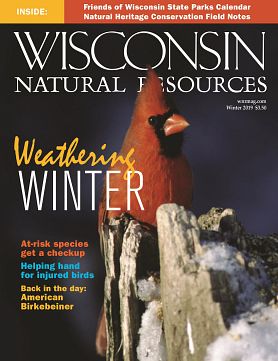
NO FORGETTING WISCONSIN WINTERS
My Winter issue just arrived and the wonderful article “Masters of Mother Nature” has been devoured. It brought back memories of gathering goldenrod galls for ice fishing, shoveling a 5-foothigh drift to get to the bird feeders, taking students on a winter nature hike at the Audubon Center in Milwaukee (Schlitz Audubon Nature Center, Bayside) and much more.
One winter when I took the advanced biology class from Nathan Hale High to the Audubon Center on Lake Michigan, the wind chill was minus-25. It was an eye-opening learning experience when the kids saw that a small bottle of liquid on top of the snow had frozen in an hour’s time, while one buried a foot under the snow was still liquid.
Thanks for this interesting group of stories. We had a cold snap here in Arizona recently — it reached 32 degrees, and a medium weight jacket was sufficient to keep me warm. I did look at the double jacket from Wisconsin days hanging in the closet and wondered if I would ever need it again.
John F. Knight
Sun City West, Arizona
John, now retired, was a longtime biology teacher at Nathan Hale High School in West Allis, making him quite familiar with the ways of winter in Wisconsin.
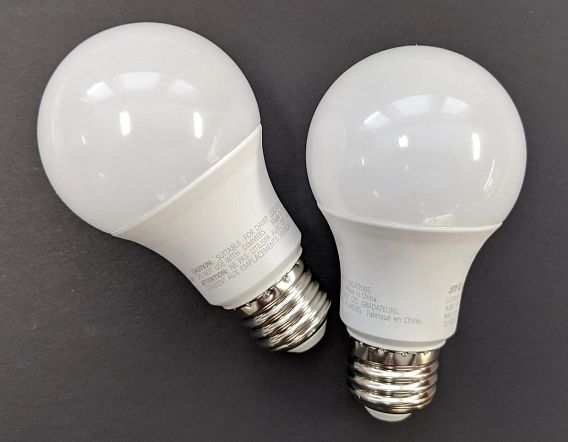
SHEDDING LIGHT ON BULBS
Great historical recap of Earth Day and Gaylord Nelson’s role, in the Spring magazine. Your “Light it up” recommendation on page 30, however, is off the mark.
CFLs (compact fluorescent lights) are a thing of the past. They were a transition option as more efficient LEDs (light-emitting diodes) came down in price and offered multiple form factors. Plus, no mercury to deal with. Your picture shows LED bulbs, but your words are six years behind the times.
P.S.: LEDs have been a key part of my net zero retirement home.
Don Hoffman
Black River Falls
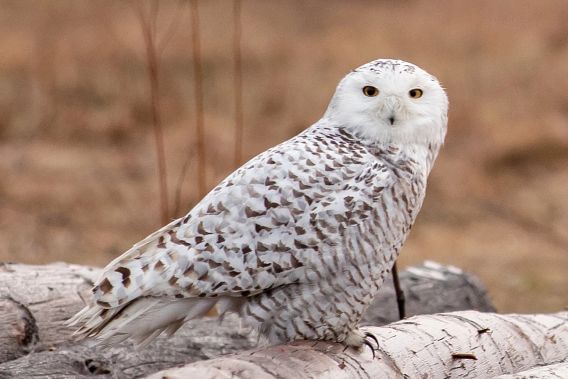
SNOWY OWL ON A RAINY DAY
I am always out taking pictures of Wisconsin’s nature/wildlife. I came across this beautiful snowy owl on March 29 at 6:15 p.m., just north of Ladysmith, in the cold rain and wind.
Scarlet Nagel
Ladysmith
Spring 2020
Spring 2020
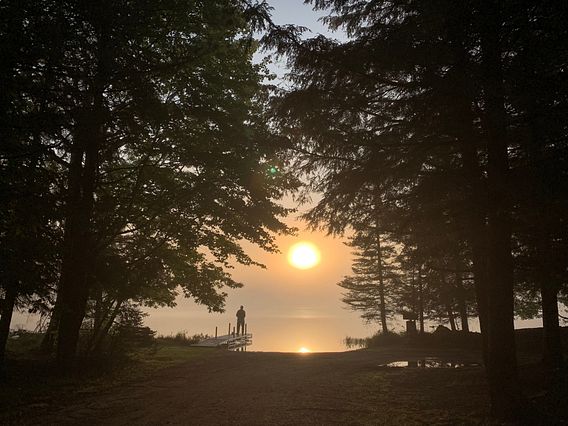
REWARD FOR THE EARLY RISER
I was camping in Armstrong Creek with my wife and her family, and my dog woke me up to go potty at 6:30 a.m. I was not happy about that, but because of that I happened to see this amazing image of a guy fishing from a dock that I was able to capture with my phone.
Francisco Guazzone
Green Bay
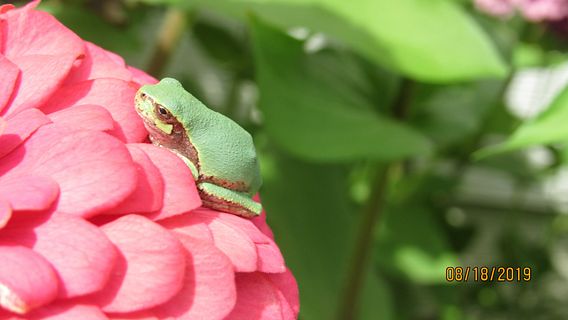
COLORFUL TREEFROG
While working among my zinnias, I noticed what I believed was a piece of dirt or leaf on one of my blooms. I almost brushed it off. After taking a closer look, I discovered I was looking at a tiny green frog. It was only the size of my thumbnail. I did a little research and think it may be a European treefrog. I can only guess or imagine how this little frog came to be here among my zinnias in Wisconsin. Can you verify if this is correct?
My husband and I both enjoy Wisconsin Natural Resources magazine and look forward to your many interesting stories in each issue.
Marion Runge
Wind Lake
DNR conservation biologist Rori Paloski replies: “That’s a great photo! The frog is either a gray treefrog (Hyla versicolor) or Cope’s gray treefrog (Hyla chrysoscelis). These two species are physically identical and can only be differentiated by their breeding call, DNA or chromosome number. Interestingly, the gray treefrog has four sets of chromosomes, while the Cope’s gray treefrog has two sets. These species are also unique in that they can change color based on their surroundings, most often seen as a shade of green, gray or brown. Although this frog hasn’t turned pink to match the flower, the green coloring is probably an indication of all the green vegetation in the area!”
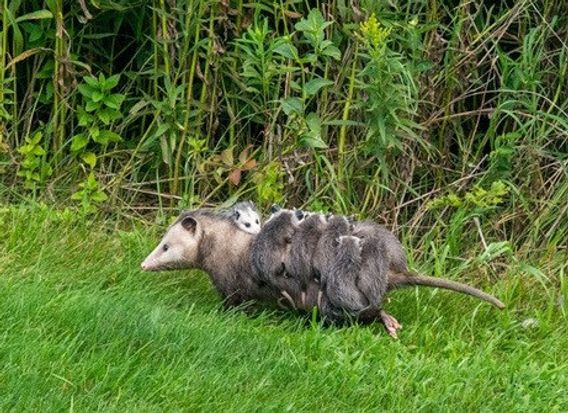
POSSUM POSSE
We recently saw this mother opossum strolling through our yard carrying 11 little ones — five on the right side of “mama” and six on her left side. Seems like a heavy load. She apparently was moving them to a new location early in the morning when we saw her and took pictures. We haven’t seen her since then, but know they are usually seen during the night, rather than daytime.
We thought the photo might be of interest to your readers. We get your magazine and enjoy it so much.
Dick and Jan McLeod
Rochester, Minnesota

MUSSEL BOUND
My grandson found this in a small creek in the township of New Denmark. His name is Nolan Larsen. I thought it very large for such a small creek. Is this unusual?
David Larsen
Denmark
DNR conservation biologist Lisie Kitchel replies: “Very cool — great find! This is called a giant floater — scientific name Pyganodon grandis. As the name implies, they can get quite large and occur in all kinds of waterbodies from small streams to big rivers to lakes.”
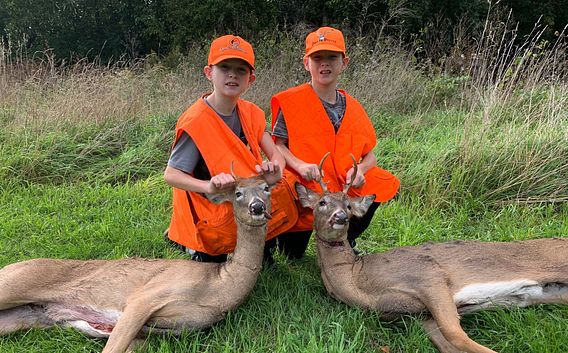
DOUBLE THE FUN
My wife and I took our twin 9-year-old grandsons (Austin on the left and Hunter, right) out for the 2019 youth deer hunt. We are from Beloit, and we travel to the small town of Babcock in Jackson County every year for deer hunting. This year was the first year our grandsons were available to participate in the youth deer hunt but it won’t be the last. The boys had a great time and both harvested their first bucks on Oct. 5. A big “thank you” to the DNR for giving us this opportunity.
Ben Brockman
Beloit
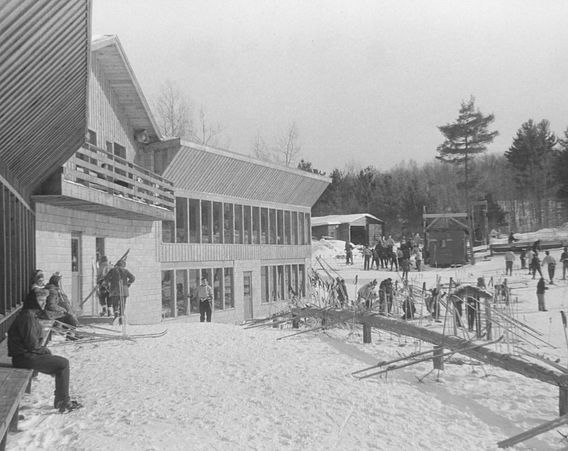
© GEORGE JULL
TELEMARK MEMORIES
I really enjoyed reading the article about Tony Wise and his Telemark Lodge in the Winter 2019 issue (“Back in the day”) as it brought back lots of special memories of time spent there many years ago. My wife and I spent several short winter vacations on the cross-country ski trails including the Esker Trail that was one of our favorites. There were also a couple of very large hills on the many available trails that we had to challenge from time to time, albeit not always successfully. We always enjoyed ending a day of skiing by relaxing in front of that huge stone fireplace just inside the front door of the lodge.
Norm Hanson
Roseville, Minnesota
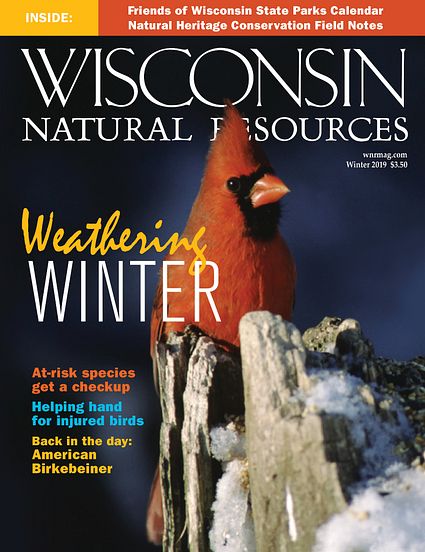
GASPS FROM ASPS
While I always enjoy the entire magazine, I just had to write this time and tell you how much my husband and I enjoyed the “Masters of Mother Nature” (Winter 2019) article! So much good information in short but informative pieces. Wish you could cover more animals and nature.
One other thing, and I’m sure you can’t do this, but I would love a warning on the cover or inside page if there are any pictures of snakes! I’m so terrified of them and hate when I turn a page and there it is. I swear every issue has at least one picture. Thanks for your excellent work!
Maggie Christens
Pound
Thanks for writing, Maggie. While we can’t promise a “snake-free” edition, we always appreciate hearing from our readers and even more so when we know we’ve given them content they find interesting.
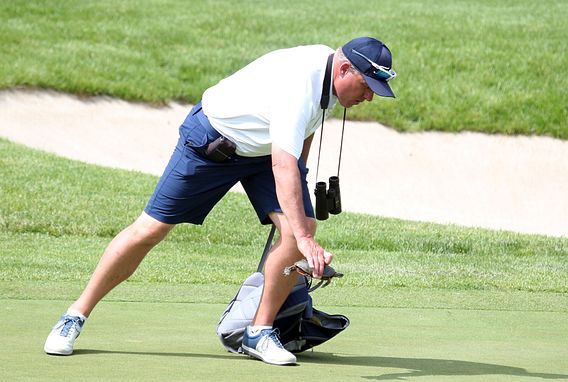
SHELL GAME ON THE GREEN
Given the recent rash of publicity referencing “please help migrating turtles cross the road,” I thought your magazine might want to take advantage of an image I took at the WIAA State Boys Golf Tournament (last June). Consider it my gift to the DNR.
Mary Langenfeld
Madison
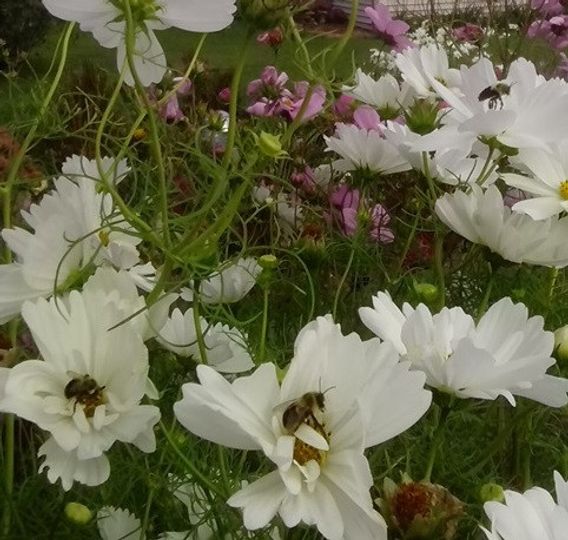
BEAUTY AND THE BEES
In September, my wife’s flower bed filled with cosmos flowers seemed to be a really big hit with the bumble bees. Must be 50-plus swarming the flowers!
Doug and Karen Kurschner
Lower Turtle Lake
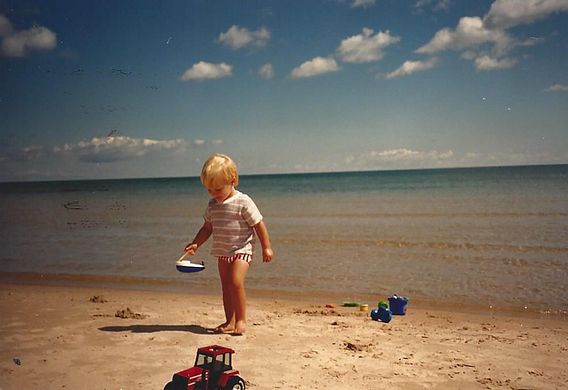
ROCK ISLAND TREASURE
Our family has been longtime subscribers of the Wisconsin Natural Resources magazine, and we love reading it from cover to cover! Our sincere thanks to you and your entire staff for your endless energy in putting everything together to create such a beautiful magazine.
After reading the Fall 2019 issue, “Of lands and lighthouses,” I wanted to share this picture with you and your readers. This is a photo of our oldest son, Jordan, taken in 1988 on Rock Island. The blue sky, dotted by a few white clouds, the crystal clear water and gorgeous sand beach made for an incredible photo 31 years ago! My husband and I and our three children have been visiting Rock Island and Door County every year since, and we treasure every moment we spend there.
Liz and Karl Klessig
Cleveland, Wisconsin
Winter 2019
Winter 2019
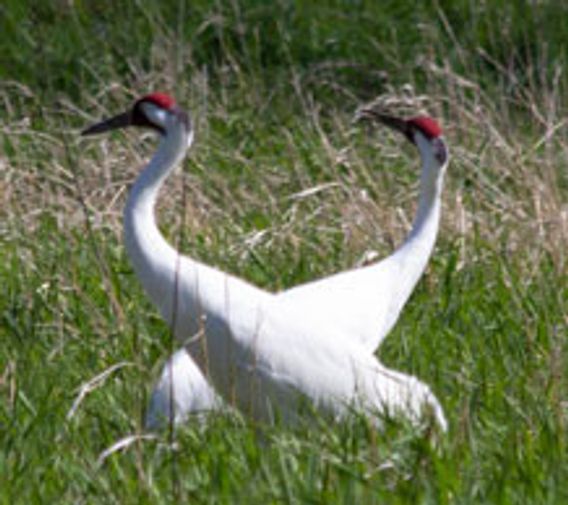
BOUNTIFUL BIRD WATCHING
On May 25, we spotted a pair of whooping cranes at the Horicon Marsh Wildlife Refuge. We have attached a photo. We also spotted a black crowned night heron on Ledge Road, which is just south of Highway 49. Later, we spotted an eagle and a couple of juveniles just south of 49.
Jim and Bonnie Halper
Kewaskum

SUNSET FISHING
I took a picture of my oldest son fishing at Franklin Lake and thought it would be very neat to be in the magazine. Thanks for your time.
David Sackett
Rhinelander

BLACK EARTH BEAVERS
This photo was shot along Black Earth Creek, 2 miles west of Cross Plains, during a high water event. It shows an adult beaver and four little ones. Enjoy!
Dan Buckland
Cross Plains

SMELT YEARS AGO
It took me a while to find this picture (smelt was featured in Spring 2019 “Back in the day”). It was taken by Earl Johnson, my godfather, who was chief photographer for the Duluth Herald and News Tribune. He and others had been trying to get a picture of the smelt in the water for some time.
He was finally able to get this picture in the spring of 1959, I believe, but it could have been a year either way. It was taken on the Lester River on the east end of Duluth. That’s me in the picture. I think this was published in a Minnesota outdoor periodical.
Jim Morris
Berlin
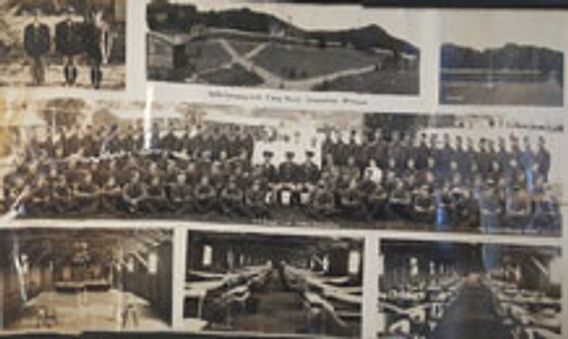
REMEMBERING THE CCC
I found the write-up on Perrot State Park (Summer 2018) while searching for info on the Civilian Conservation Corps’ Camp Perrot. My father, Orvis E. Fry, was there in late 1930s and he saved a picture, which I’m attaching for your use.
He was training as an orderly/medic with the doctor. He was from Salem, Illinois, and was born in 1918. Camp Perrot must have made a lasting impression on Dad, as he stayed in the medical field for the rest of his life. He ended up as a surgical X-ray technician and finally retired in 1988 from Mount Sinai Hospital in Miami Beach.
Kenneth D. Fry
DeLand, Florida
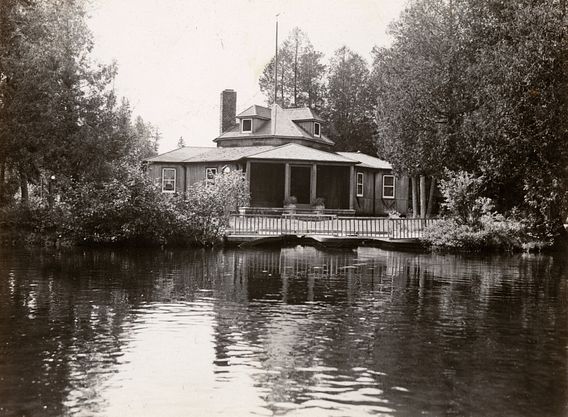 © STABER W. REESE
© STABER W. REESEPERSONAL CONNECTIONS
I was pleased to see several articles with a personal connection in the Summer issue. Mary Kohler (“A comeback for the ages”) is a sister to a longtime bird hunting and fishing friend, the late David Stewart, whose family built summer homes on Pine Lake east of Chetek over 100 years ago. They also had a home on the Brule (“Life’s better on the Brule”). I was lucky enough to go on some adventures with Terry Kohler and Dave.
When I turned to “Back in the day,” I was reminded of my favorite outdoor author, Wisconsin native Gordon MacQuarrie. He mentions the Pierce Estate (above) in several stories. At 80, my legs do not allow me to go into places like the Van Vliet Hemlocks (“Outside in Wisconsin”), but we made trips in there several times in the past.
Bill LaVelle
Belvidere, Illinois
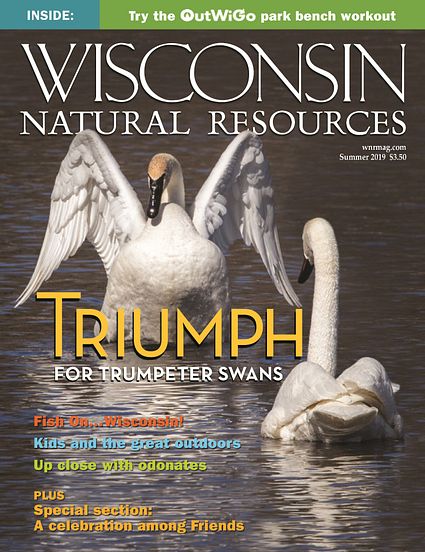
GREAT READ — AND MAKE IT A 185
The cover on your Summer 2019 issue caught my eye when retrieved from our mailbox. Trumpeter swans are something I get to see mostly in the fall, as our bush cabin on Quartz Lake, Alaska, is a big staging area for these birds on their return trip south.
I will never forget a trip on Oct. 5 in the ’90s to check the cabin before lake freeze-up. When I arrived, the lake was fogged-in, but I quickly realized I was assuredly not alone. These big birds were everywhere and their calls and “talking” drowned out my outboard. By the time I was ready to return, I was able to see fairly well. I could not believe my eyes — not hundreds but thousands of swans! Every year since I try to make that late run to the cabin.
And then the big surprise when I had a chance to read the article (“A comeback for the ages”). I had left the University of Wisconsin-Whitewater to venture “north to the Last Frontier” and the University of Alaska in Fairbanks. Over the years, I had my most incredible waterfowl hunt in Minto Flats. So I really appreciated the timely article going back 30 years.
But I do want to point out: Knowing of pilot Rod “Sky” King and also having been involved in a world-class fishing lodge using Cessna 185s and 206s, the reference to a “Cessna 187 float plane” should be a 185. I believe there was only one 187 made and the probabilities it somehow was converted to floats, well, make it a 185.
E. Thomas Robinson
Fairbanks, Alaska
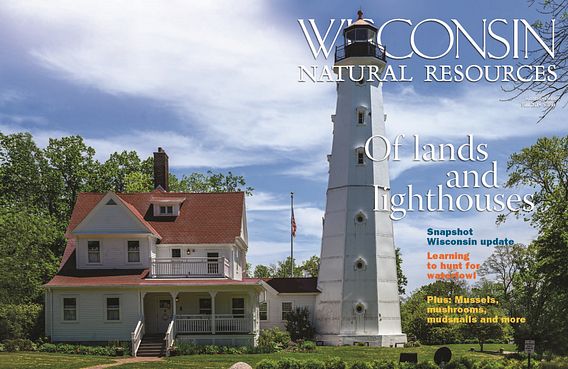
NICE FEEDBACK FOR FALL ISSUE
Many thanks for the wonderful Fall issue. It is full of interesting articles on a wide variety of subjects, as well as important information about the resources and how to become involved in specific efforts or places. Under the leadership of Secretary-designee Preston Cole, whose essays I greatly appreciate, there is obviously a renewed commitment to the mission of the Department of Natural Resources. Carry on, please.
Sharon Gaskill
Black Earth

NATURALLY TALENTED
My name is Halley, and I recently graduated from the University of Wisconsin-Madison with a degree in conservation biology and environmental studies. In my free time, I have always enjoyed drawing and painting, and have recently completed this piece representing “Mother Earth” and the intersection of water (blue waves that make up the hair) and land (animals, leaves, branches).
This piece is not like others I have done. Rather, it is esoteric. It explores the relationship between ecology and human nature. Our environment is just as much a part of us as ourselves.
My family and I love your magazine. I grew up in Appleton, preferring to play in the grass rather than on the carpet. I am very passionate about the environment and working to present the natural world as something the public will take interest in, advocate for, and appreciate. I hope to use my passion for the environment to preserve biodiversity in parks and ecosystems around Wisconsin.
Halley Feil
Madison
After sending in this submission, Halley ended up coming to work at the DNR as a natural resource program specialist in the Division of Fish, Wildlife and Parks. Welcome, Halley!
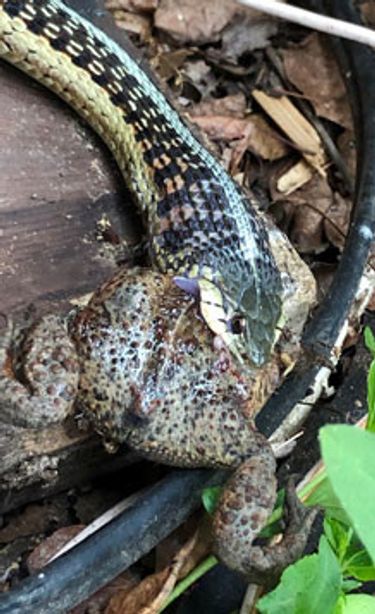
ONE BIG GULP
I relocated to the beautiful Northwoods last August. I was in Colorado for 27 years and thought that was a beautiful state, but Wisconsin is beyond amazing! I came across your publication at the Marshfield Clinic and immediately subscribed. There is so much great information.
I wanted to share a cool picture I caught. I only wish I’d had a chance to grab my camera — thank goodness for cell phones! The timing was amazing. Thank you for such a great magazine. It’s a wonderful resource for newbies!
Marlowe Hodge
Land O’ Lakes
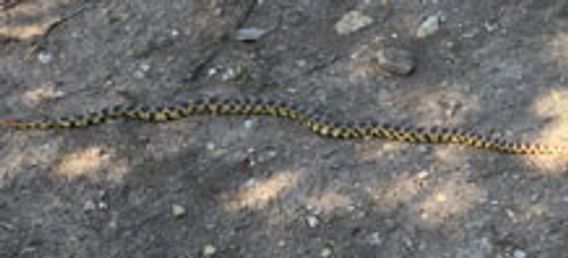
MORNING VISITOR
This bullsnake was at our front door this morning! We just moved to the Town of Sevastopol and built a new house. It is a fun time experiencing new flora and other life forms in our new home.
Merry Demske
Door County
Rori Paloski, DNR conservation biologist who specializes in herpetology, replies: “The snake in the photo looks similar to a bullsnake (also called a gophersnake) but is actually an eastern foxsnake. The eastern foxsnake is found throughout Wisconsin, while the bullsnake is restricted to the west-central portion. The two species are differentiated by their patterning — the bullsnake has patterning on its head, whereas an adult foxsnake has a solid colored head. The spot pattern on the body also differs slightly between the two. Both species are non-venomous but are considered rattlesnake mimics; when threatened, they will ‘rattle’ their tail, hoping to scare off any potential predators. Not only do they look like a rattlesnake when they do this, but the vibration of their tail against dry leaves, gravel or vegetation often produces a rattling noise that can sound very much like a rattlesnake — just what they are hoping for!” To report sightings of snakes and other species, visit wiatri.net/nhi [exit DNR].
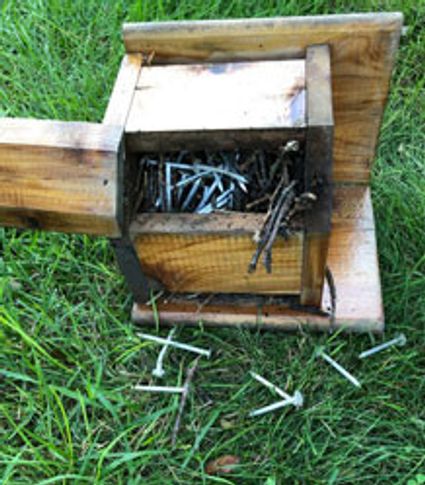
BUILDING A BETTER BIRD NEST
I thought you might be interested in this picture. I started cleaning out a wren house from our back yard to get it ready for next spring. When I opened the bottom to clean out the sticks and fluff, I also found aluminum nails. There turned out to be 35 of them. Our neighbors were putting on new siding, and I assume the wren “borrowed” a few to glitz up the nest.
Gary Rhines
Walworth
DNR conservation biologist Ryan Brady replies: “It is typical of house wrens to fill cavities with small sticks. Often, one male will do this in several cavities or boxes within his territory, even though the female will ultimately only nest in one of them. In some cases, nails, tacks, hairpins, paper clips and other metal items that mimic the size and structure of small twigs will be used. So while it’s not common to find a nest box full of nails, it’s not entirely rare or unexpected either.”
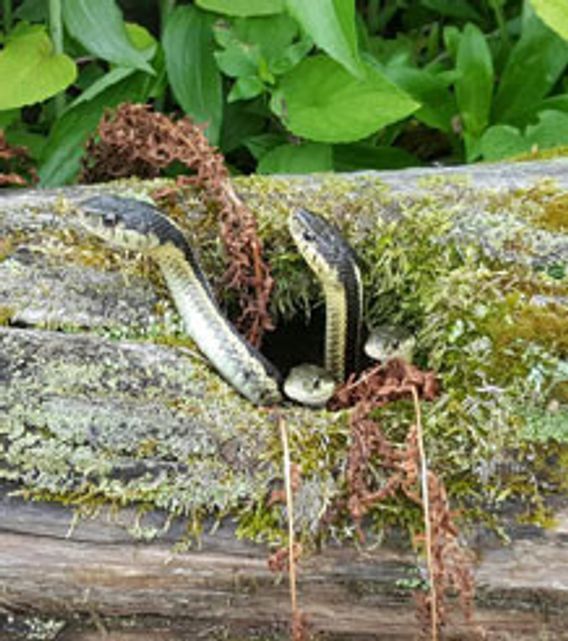
GARDEN COMPANIONS
My flower gardens are filled with many common garter snakes. They slither away quickly when I’m weeding the garden and they ignore the dogs or vehicles as long as they stay a few feet away. They seem to know they are safe. But when my husband, Jeff, comes out to the garden in the morning, the snakes come out to greet him. Some even follow him to the compost pile and wait to be given a worm. They seem to recognize him.
Snakes are great! They eat garden pests and some unfortunate toads and frogs. Feeding snakes is less messy than feeding birds and it does not attract bears. Here’s a picture of the snakes that live for the summer in our yard.
Diane O’Krongly
Mercer

SUMMER TANAGER SIGHTING
I was just reading about the summer tanager on your website. This guy was at my feeders in Jacksonport.
Kathy Navis
Jacksonport

RARE RACCOON
Is this an albino raccoon? I saw it on the east side of Highway 38 south of Four Mile Road (in Caledonia). The Root River meanders a short distance from that side of the road and there are natural areas around the river.
Steven Sandberg
Racine
Curtis Twellmann, DNR furbearer ecologist, replies: “This aberrant pelage pattern is commonly referred to as a ‘blonde’ raccoon and is an example of leucism — or the reduction of, but not complete elimination of, melanin/pigment. While not as rare as albinism, this is still pretty rare. Leucistic animals can generally live normal lives, as they usually lack the other related genetic deficiencies like poor eyesight that hamper true albino critters. Neat find!”
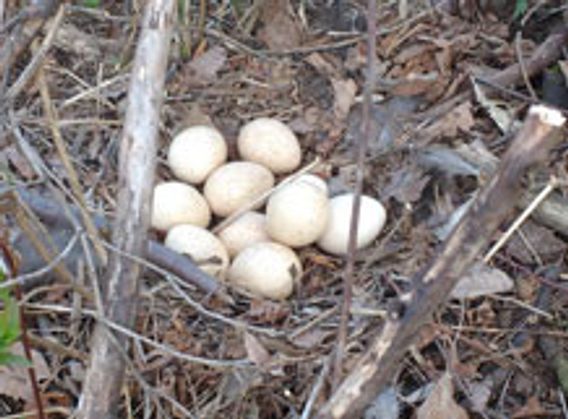
SHY HEN STAYS OUT OF THE PICTURE
I am attaching a photo of turkey eggs I spotted along our road. The hen didn’t want to be in the picture.
Margie Novak
Kennan
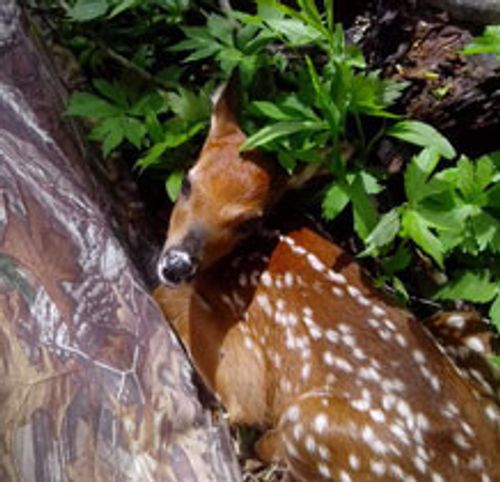
FAWN FINDS PERFECT COVER
When getting back to our cabin to pull my spring turkey hunting blind, I found this little one still using it. Just wondering, are the Wisconsin deer getting wiser and
using “deer blinds,” too?
Doug Kurschner
Almena
Thanks for the photo, Doug. And it serves as a good way to remind everyone to help Keep Wildlife Wild. Early on, fawns move very little and rely on their camouflage coat and lack of scent to hide them while the mother largely stays away to keep possible predators at a distance. If a fawn is found lying alone, unless obviously sick or injured, Keep Wildlife Wild and simply leave it be. Learn more at the DNR's Keep Wildlife Wild webpage.
Fall 2019
Fall 2019
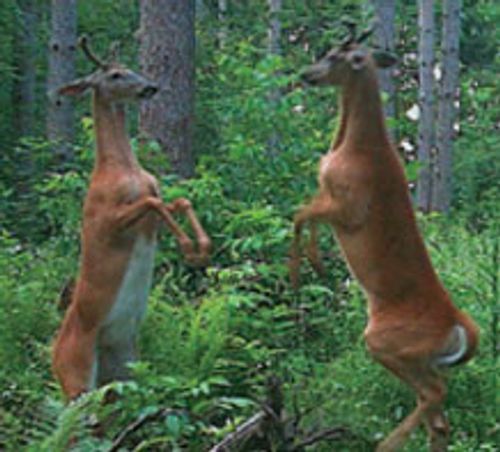
DEER LIKE A MIRROR
I have taken this picture of two bucks practicing on my property in Deer Park — almost looks like a mirror picture. Just thought you might be interested in publishing it.
Bob Krueger
Deer Park

HAVING HIS DAY AT DEVIL’S LAKE
Here’s a photo of my dog, Zeus, at the dog swim area at Devil’s Lake State Park.
Denise Tincher
Baraboo
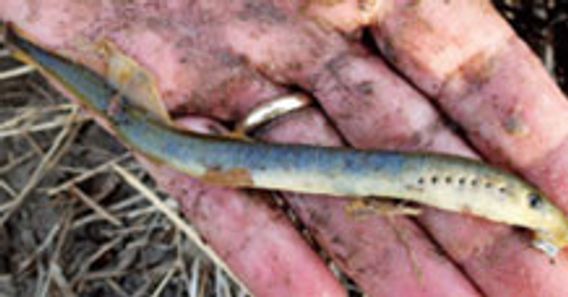
LOW-DOWN ON LAMPREY
While chasing trout, I saw some odd feeding on the surface. The big trout were smashing what looked at first glance like baby snakes. It was not constant. I dismissed it and later caught a decent brown and it regurgitated this.
I have seen these in the past but have never seen trout feed on them. They signify a healthy stream. They are American brook lamprey, I believe. They are not a parasite like their relatives. They feed on tiny things on the bottom. Their mouth is not developed enough to attach to a host. They have a very short window for breeding. They are native species and an imperiled species. They obviously are tasty to big trout.
Len Harris
Richland Center
DNR fisheries biologist Karl Scheidegger replies: "Yes, there are three nonparasitic lampreys in Wisconsin — American brook Lamprey, northern brook lamprey and southern brook lamprey. This appears to be an American brook lamprey. It inhabits the headwaters of cool, clear streams over sand and small gravel. It prefers small-sized streams, occasionally medium-sized rivers. Common fish associates are sculpins, brook and brown trout. It is a food for sport fishes and provides an important link in the food chain. It is sensitive to pollution, especially turbidity."
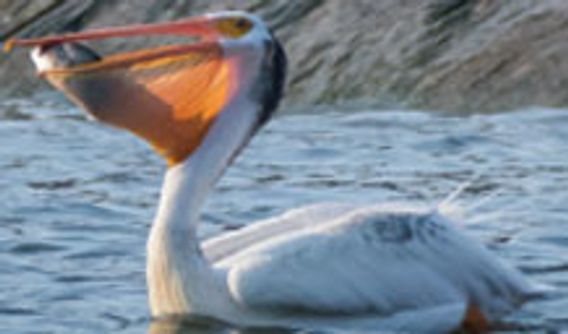
WATERFRONT DINING
White pelican in Menasha.
Harold W. Boccheciamp
Neenah
Summer 2019
Summer 2019
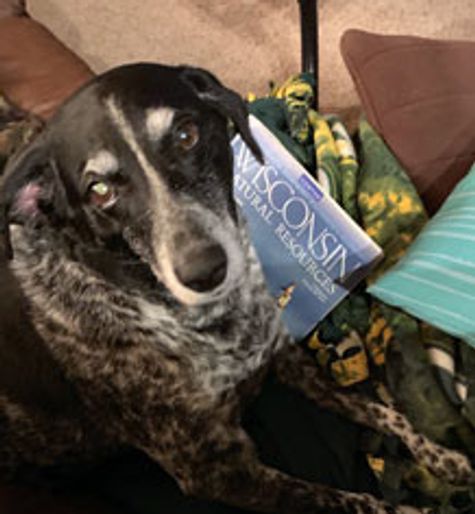
ONE SMART PUP
We love reading your magazine (the pictures are amazing) and are avid patrons of the Wisconsin Department of Natural Resources — hunting, fishing and camping in Wisconsin state parks, of course with our dog, Trigger, by our side. Caught Trigger on the couch with the lighthouse issue one evening. Perfect photo op!
Larry and Gina Fritz
Sullivan
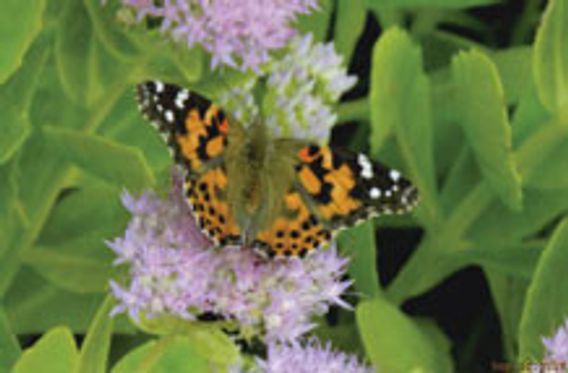
IS THAT A REGAL FRITILLARY?
As I got to the last page of the Natural Heritage Conservation insert (Winter 2018) and saw the beautiful butterfly, I said, "I've seen that butterfly on my flower bush right outside my front door." I took several pictures of them, as there must have been a dozen going from flower to flower, the same flower (I think) that's in your picture. Anyway, I made an 8x10 copy of the photo and it is in my office where I look at it every day. Keep up the good work!
Jim Pat Patterson
Oshkosh
DNR conservation biologist Jay Watson replies: "The butterfly in the photograph is a painted lady butterfly. Some years they are pretty abundant in Wisconsin and other years almost absent. The reader's photo is dated from 2017 and that was a great year for painted ladies in Wisconsin."
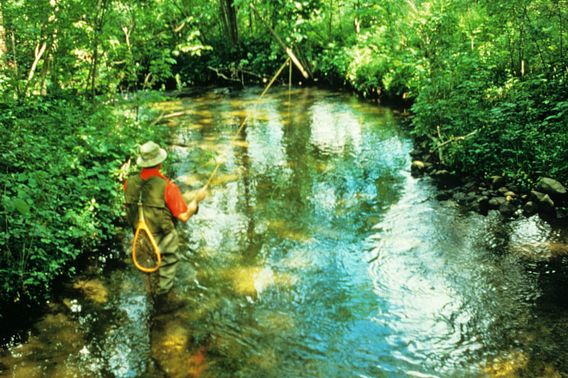 © DNR FILES
© DNR FILESODE TO ANGLING
I am a communications instructor at Fox Valley Technical College in Appleton, and I wrote a sonnet about the stages Wisconsin anglers often go through: They want to catch the most fish, then they want to catch the largest fish, then they want to catch the most difficult fish. Through it all, however, they practice catch-and-release and keep their trophies only in their memories.
I am sending you this poem with the hopes that you might print it in your fine magazine. I have subscribed to Wisconsin Natural Resources for years, and it is a very informative, useful magazine. It has helped me plan weekend excursions while teaching me about the natural goings-on around our great state of Wisconsin.
Jonathan Walter Iwanski
Appleton
An Angler's Cycle
The novice aims to bring to hand the fish
of greatest number, only hoping
that high Pisces hears and answers his one wish
and tells him where His blessed goals are at.
With time behind, the next aim is for size,
for quality's own definition tends
to change with he that hopes to think he's wise –
the standards sometimes change from what to when –
as the next stage for anglers comes to pass:
not number, shape, or any such like goals;
but just how difficult it was to catch
this finned creature making him feel whole.
Although I do not grasp to kill and eat,
I think my trophy always for to keep.
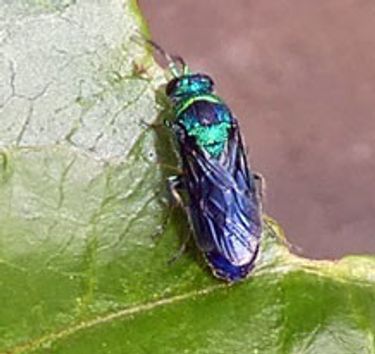
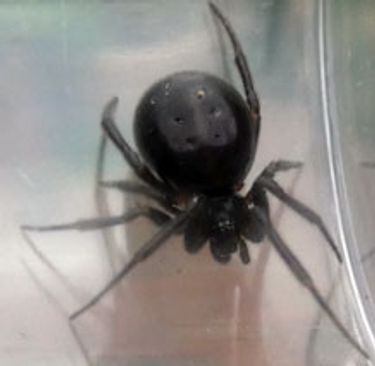
WHAT KIND OF BUGS?
I have a healthy respect and a cautious admiration for spiders. I came across this small spider, only 7 millimeters long from abdomen to eyes. It is all black with no distinct marking, four dimples on the back and a reddish tinge near the joints of the legs. On the underside is a lighter brown area and a small whitish semi-circle. Having seen black widow spiders out West, this one looks similar but has none of the red markings. The closest possible match I can find after searching internet bug ID sites is a false widow or rabbit hutch spider.
I also photographed a small wasp and after much searching I believe it is a cuckoo wasp. I'm 60 and spent my life outdoors and never heard of one before. It is almost a metallic-looking green and blue and seems to like my passionfruit plant the best. Did my inner bug-nerd get the correct IDs?
Red Simpson
Winneconne
Extension entomologist PJ Liesch responds: "The spider is from the same family as black widows (family Theridiidae) and appears to be one of the species from the genus Steatoda (sometimes these have been called "false widows"). I suspect this particular spider may be Steatoda borealis, a common species for our area, although we have a few species from this group in the Midwest. The wasp is indeed a cuckoo wasp from the family Chrysididae. With the beautiful metallic green color, they often aren't recognized as wasps at first! As director of the UW-Madison Insect Diagnostic Lab, I invite readers to contact us through our website — UW Madison Department of Entomology, Insect Diagnostic Lab [exit DNR] — about having insects or arthropods identified. The website has instructions for submitting digital images or physical samples to the lab.
Spring 2019
Spring 2019
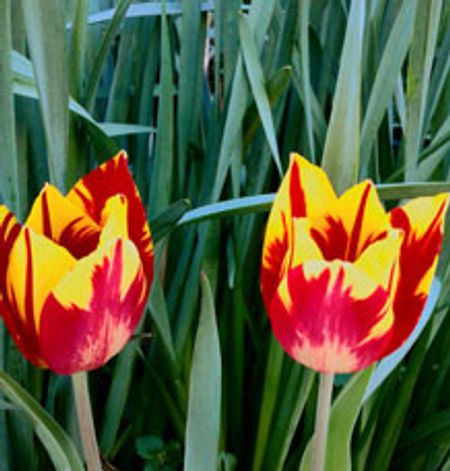
SIGNS OF SPRING
This photo was taken last year in South Milwaukee and the tulips were some of the first full blossoms of the year! They caught my eye because of their beautiful and distinct colors. I believe the featured tulips are a type of "burning heart" tulips and are a mid-spring blossom.
Amber Wilbur
Cudahy

MOURNING MEETING
We've always had mourning doves around here but I never saw them grouped like this before — 16 in all I counted circled on the mulch under a maple tree in our backyard. They all appear to be facing out from the circle (on guard?).
The mulch under the maple is raw wood chips so I suppose it's composting a bit and giving off a little heat. Cool and rainy this a.m. I figure maybe they are starting to flock together for migration time, maybe a layover through the night. They all flew away together after about 15 minutes.
The ducks and geese have been running premigration flights over the house for the last week or so. Winter is coming too fast for me. Give me about three months of fall first at least.
Mark Lang
Menomonee Falls
DNR wildlife biologist Ryan Brady provides this explanation: "Although difficult to say with certainty, the image appears to show a number of juvenile doves. This suggests the flock represents several family groups associating with each other, which is not uncommon, especially as fall approaches. The birds were likely able to stay drier, and perhaps warmer, on the mulch vs. the longer wet grass. Flocking up indeed provides many eyes for spotting Cooper's hawks, foxes and other predators, although not to the extreme that bobwhite quail coveys do!"
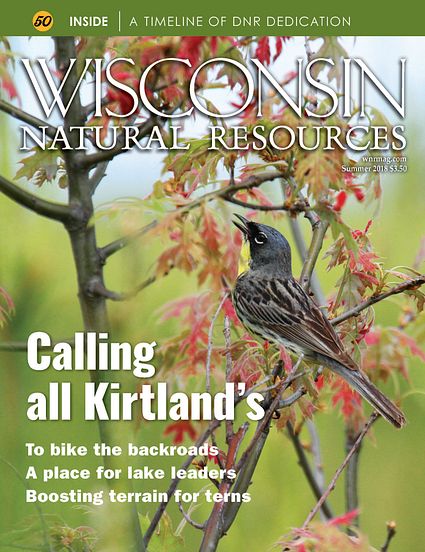
COMPLIMENTS FROM THE CLASSROOM
I am emailing you as a part of a class I am enrolled in for school, where I had to compare two different magazines of my choice. While comparing this magazine with one completely opposite, it made me appreciate the amount of information and detail you include in the magazine.
I am a person that usually doesn't take the time to read a magazine but learned that most magazines are filled with ads and unimportant information, unlike Wisconsin Natural Resources. I just wanted to take the time to note that you guys do a great job with your magazine, which highlights a lot of beautiful areas throughout Wisconsin while also demonstrating all the opportunities to take part in within the outdoor landscape of our state. Thank you!
Mikayla Endres
Lone Rock
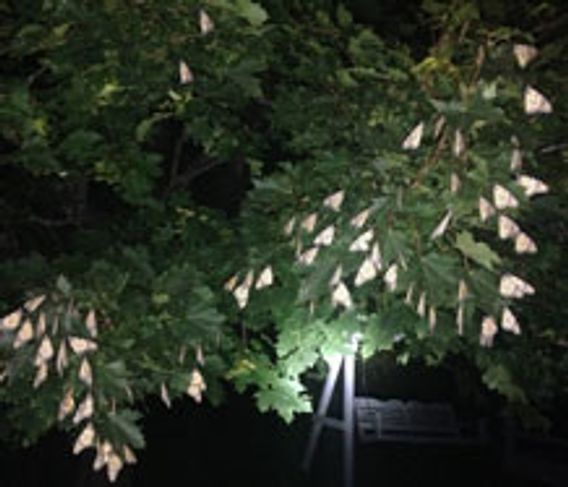
OVERNIGHT BUTTERFLY BOARDING
One evening in September last year, at the peak of the bloom of the goldenrod, monarch butterflies kept fluttering around and gathering on part of a tree in my backyard. That night, there were a couple hundred gathered on a few branches. In the morning, the first to be in the sun were the first to fly away.
I have 3 acres, of which 2 acres are native prairie plants, mostly goldenrod, with scattered milkweed, thistle and other wildflowers and shrubs. I have fond memories of monarch butterflies and caterpillars from childhood — have noticed the decline in their numbers. Hoping they survive!
Mark Howe
Hobart
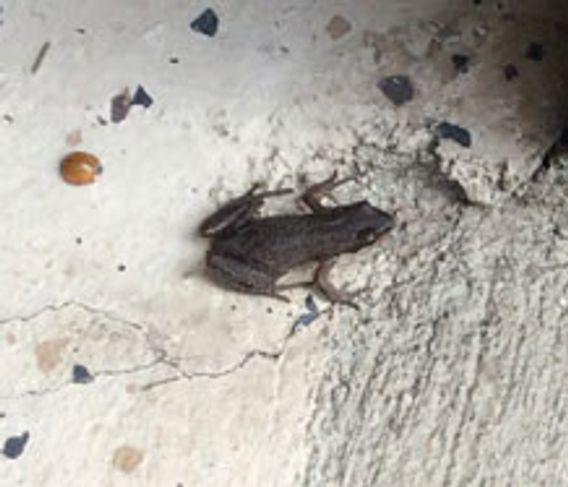
NAME THAT FROG
Today is Dec. 19 and above-average temperatures over the past month or so. I have seen this little guy in my unheated out-building whenever we have nice weather. Not sure where he lives within the building. Today I counted four of these frogs within my building. Can you help me identify what they are and how unusual it is to see them in December? You may notice by the ladybug in the picture how small these frogs are. The bug in the pic was not intentional, just an odd year to still be seeing bugs so late. Thank you.
Mark Zuberbuehler
Kenosha County
Richard Staffen, a conservation biologist with DNR's Natural Heritage Conservation Program responds: "Dear Mark, verified with a few other herpetologists and we agree this is a chorus frog. It is not uncommon to see them active during winter months during these warm spells. The chorus frog overwinters under debris (rocks, logs, duff) or in cracks/crevices where they try to get below the frost line, but can easily emerge or stay active as long as the weather permits."

CREATURES OF RARE BEAUTY
When you walk through the woods of northern Wisconsin and spot one of these white deer, it is a haunting experience. To see two together is a real treat. This photograph was taken near Boulder Junction.
Mark Boettcher
Brookfield
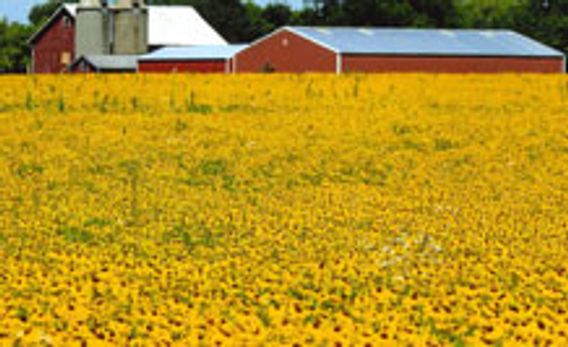
PRETTY, WITH A PURPOSE
I enjoy driving the Wisconsin back roads year round. Last summer, I was driving along Highway F out of Ixonia going south. Just before West River Road, there is a farm on your left. I was surprised by the beautiful, brilliant yellow field of black-eyed susans and other wildflowers. I challenged myself to find the owner of these fields so I could share some of the photos.
The farmer was thrilled to get the photos and tell me of the project he started with the Oconomowoc Watershed Protection Program. Unfortunately, I didn't get this nice farmer's name. I did learn about the watershed program. A few other area farmers are also participating. The farmers are filling their fields with wildflowers that have deep roots. The roots will help hold back all types of water runoff. I was very pleased to learn that farmers are actively working with their area watershed groups to clean their local water runoff from area creeks and such.
Wendy Kubokawa-Wells
Watertown
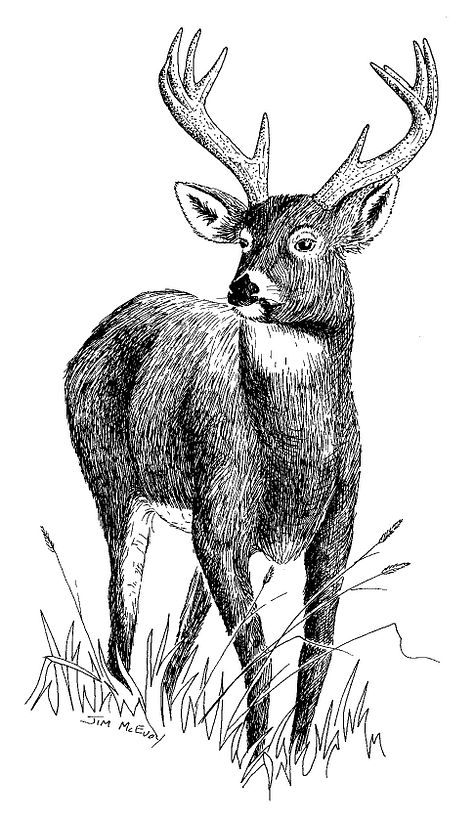 © JIM MCEVOY
© JIM MCEVOYPASS THE BUCK
What a great article Ron Weber wrote in your 2018 Winter edition ("Buck of a lifetime"). I, too, have dreamed of a buck of a lifetime and although one has not appeared in front of me, I, like him, have aimed and passed on a few bucks that have come before me. It's a special feeling to let them walk and live another day and gives true meaning to hunter ethics. By his action, he has now joined a special group of hunters that end the hunt not with a shot but with a memory of a lifetime!
Roy Lindeman
Green Bay
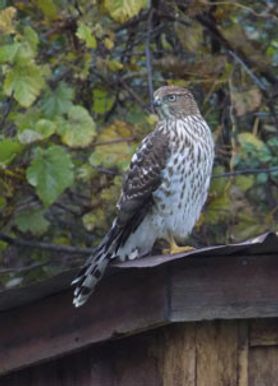

COUPLE OF COUNTRY BIRDS
Here is a picture of a Cooper's hawk that landed on top of the outhouse I built for storing gardening tools. I also found another picture that I thought you would appreciate seeing. We live out in a country subdivision between Milton and Janesville, and we have frequent turkey visitors. This one would stop by and peck on our patio window.
Elton Duffy
Milton
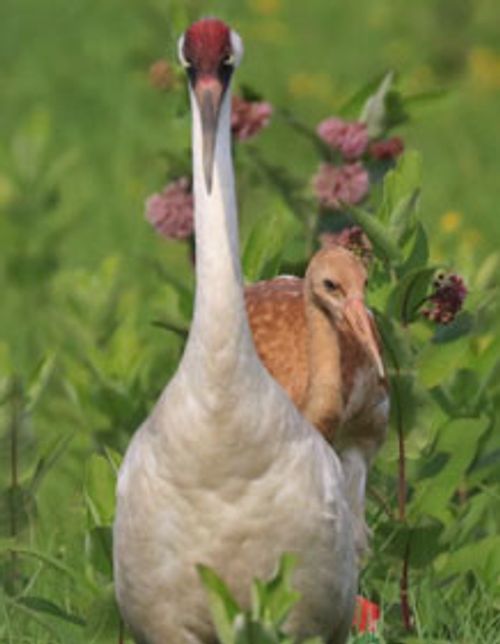
WHOOPING CRANE FAMILY LIFE
Hi, I am a nature photographer in Rome, Wisconsin. This past year, I have been making a photo history of the local whooping crane family, a slide show that shows the progression of the chick from a little fuzz ball to a bird that is capable of controlled flight. It shows the different terrain that the cranes use, some of the foods that are consumed and the daily life of the family unit.
Bob Stoil
Rome
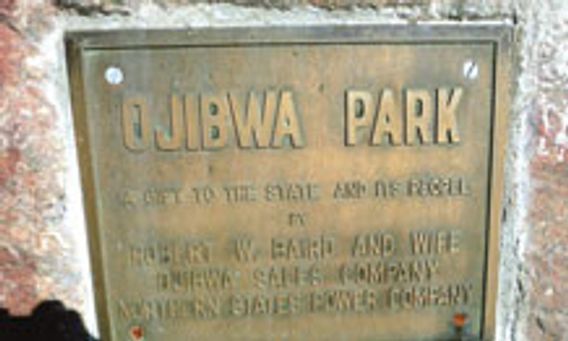
THANKS FOR THE GIFT
I enjoyed reading about the three generations of the Ruegger family ("DNR memoirs," Fall 2018). However, it seems you left out some information about the benefactors of the Ojibwa Park — see my picture. I don't know the details of the funding of the Sawyer County wayside park, but you should have mentioned the three parties listed on the marker (Robert W. Baird and his wife, the Ojibwa Sales Co., and Northern States Power). It is a lovely sight and the township campground on the south side of the highway is superior to the DNR campgrounds in many respects. P.S., enjoy the magazine very much!
John G. Powles
Middleton
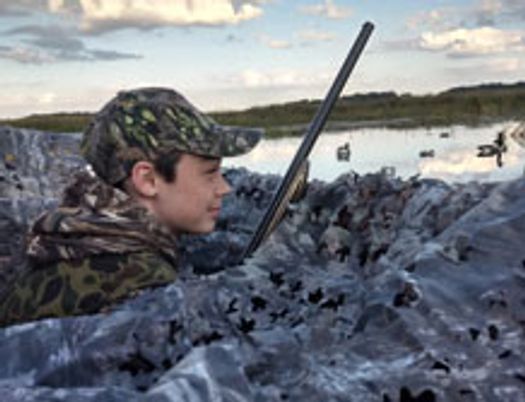
HOOKED ON THE HUNT
We wanted to share a picture of our son Matthew, 14, enjoying a morning waterfowl hunt. This picture was taken during the two-day youth hunt. We are grateful for the opportunity to participate in such a fantastic program to introduce our youth to Wisconsin's great hunting tradition. He's hooked!
William and Andrea Muench
Turtle Lake

